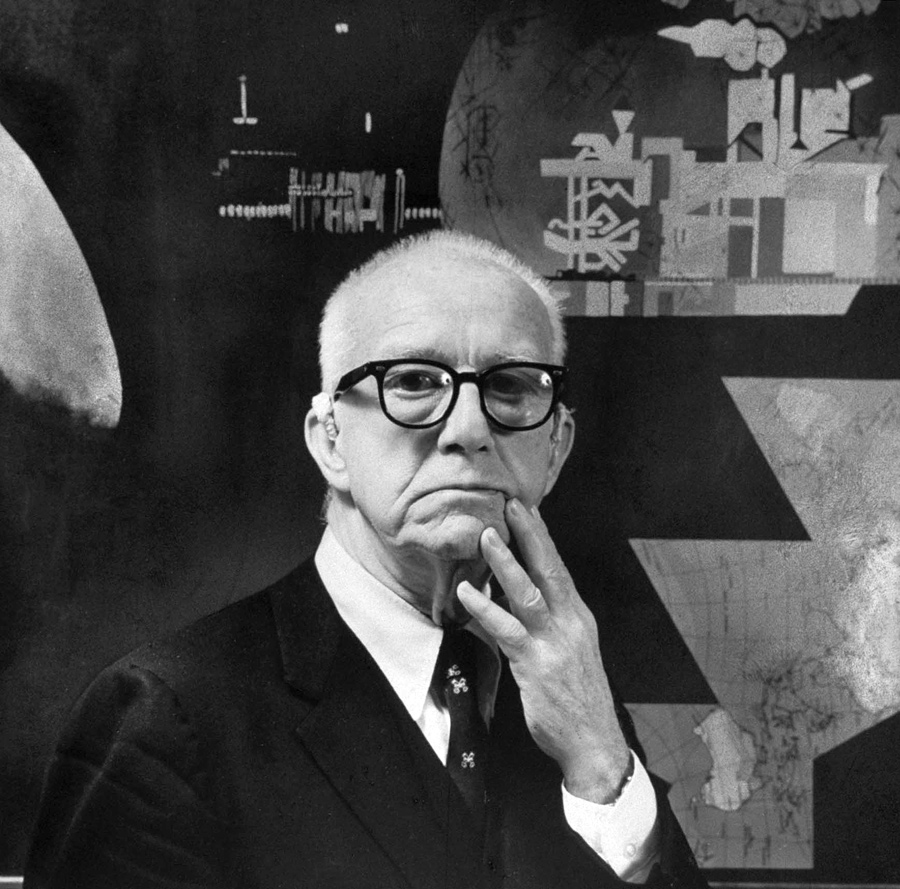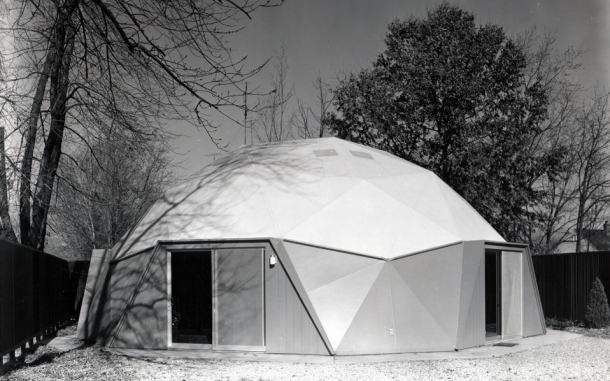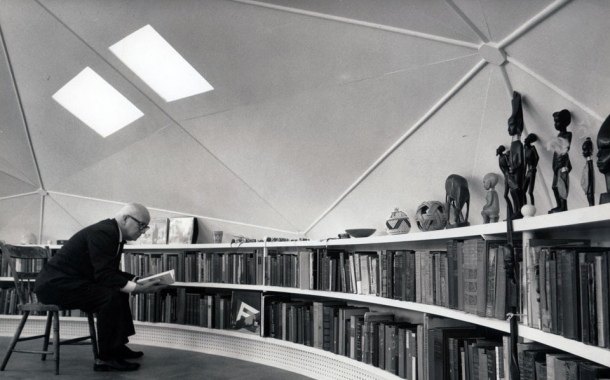Book History

Peter Bog nanni’s The House of Tomorrow
is inspired by the life’s work of R. Buckminster Fuller and his greatest invention – the geodesic home. According to the Buckminster Fuller Institute,
Fuller is “hailed as one of the greatest minds of our times” and spearheaded
innovative design to improve human lives through “more with less” technology.
nanni’s The House of Tomorrow
is inspired by the life’s work of R. Buckminster Fuller and his greatest invention – the geodesic home. According to the Buckminster Fuller Institute,
Fuller is “hailed as one of the greatest minds of our times” and spearheaded
innovative design to improve human lives through “more with less” technology.

Throughout his career, Fuller worked in many fields including housing, shelter, transportation, education, energy, ecological destruction, and poverty. While making many inventions, that he called “artifacts”, Fuller held 28 patents, authored 28 books, received 47 honorary collegiate degrees, and his most well-known artifact – the geodesic dome – was reproduced over 300,000 times worldwide.
The granddaddy of all geodesic homes is located in Carbondale, Illinois and was built in 1959 in just seven hours. The Bucky Dome, as it is now called, is the only dome in which Fuller lived in and owned. The Fuller Dome Home Organization is now aimed to preserve the Bucky Dome. Below is a clip of Fuller overseeing the production of his home:

Author Background

Peter Bognanni, a professor at Macalester College, Minnesota, was born and raised in a small town in Iowa. His author bio from The House of Tomorrow is as follows:
Peter Bognanni is a recent graduate of Iowa Writers’ Workshop where he was awarded a Teaching-Writing Fellowship for his work. He is a 2008 Pushcart Prize nomineee, and his short story “The Body Eternal” was chosen by Stephen King as one of the “100 Most Distinguished Stories of 2006” in The Best American Short Stories (2007). Bognanni is currently a visiting instructor of creative writing at Macalester College in Saint Paul. He once played in a terrible high school punk band.
Bognanni is known in the Minnesota writing community as having a sharp whit and speech constantly infused with sarcasm. Displaying this gift is a video of Peter Bognanni giving an acceptance speech for the Minnesota Book Award Reader’s Choice Award:
Many might wonder why Bognanni decided to write about a boy living in a geodesic dome. Lucky for us, he gave the story of how The House of Tomorrow came to be in an interview with Brizmus Blogs Books.
“To be perfectly honest, I started the book knowing very little about Bucky. I had seen him on a postage stamp once (great stamp by the way) and I knew a little about geo-domes. But everything started after a conversation my wife had at a party. Someone at this party told her, pretty much out of the blue, that he lived in a dome with his grandmother. My wife related the conversation to me in the car on the way home, and the next day I started to become dome-obsessed. I must have looked at domes for four hours the next morning. This obsession led me to R. Buckminster Fuller, inventor of the geodesic dome. And the more I read about him, the more I became fascinated. Such wild ideas. Such enthusiasm. Such large glasses! He wanted to encase all of Manhattan in a giant climate-controlled dome. He wanted humans to live in floating dome cities that would migrate around the globe. He firmly believed in telepathy. How can you not love this guy? I started to imagine what it might be like for someone to grow up living Bucky’s principle to the fullest. That’s how the protagonist of my book, Sebastian, was born.” – Brizmus Blogs Books
Timeline of Events
1 895 – Richard Buckminster Fuller was born in Milton,
Massachusetts, on July 12, 1985.
895 – Richard Buckminster Fuller was born in Milton,
Massachusetts, on July 12, 1985.
1913 – Fuller attended Harvard University, but was inevitably expelled “after excessively socializing and missing his midterm exams” (BFI)
1915 – R. Buckminster Fuller reentered Harvard only to be dismissed again.
1917-1919 – Fuller served in the U.S. Navy and developed and demonstrated his inventing and engineering skills by creating a winch for rescue boats to remove downed airplanes from large bodies of water. The invention led to Fuller’s nomination for officer training at the U.S. Naval Academy.
1926 – Fuller and his father-in-law developed a new method of producing reinforced concrete buildings, earning Fuller’s first of 25 patents.
1927 – After a brief depression and time of unemployment, Fuller decided “that he had no right to end his own life” and “that he had a responsibility to use his experiences and intellect in the service of others” and began a two year period of reclusion and deep contemplation about the universe.
1929-1947 – Fuller began to revolutionize construction by creating the Dymaxion House, an efficient, inexpensive home that could be airlifted to its location; the Dymaxion Car, a three-wheeled automobile; a compact Dymaxion Bathroom; and Dymaxion Deployment Units, houses based on circular grain bins which were used in World War II to shelter radar crews placed in severe climates.
1947 – R. Buckminster Fuller invented the geodesic dome
based on “synergetic geometry”.
1953 – Fuller designed his first commercial dome for Ford Motor Company in Dearborn, Michigan. Later, the U.S. military became one of his biggest clients for installations around the Arctic Circle.
1959 – Fuller became a professor at Southern Illinois University.
1972 – He was named World Fellow in Residence to a consortium of universities in Philadelphia.
1983 – Fuller received the Presidential Medal of Freedom, the nation’s highest civilian honor.
July 1, 1983 – R. Buckminster Fuller died in Los Angeles.
Early-Middle 1990's - The events within The House of Tomorrow occur.
2010 – Peter Bognanni wrote The House of Tomorrow.
Bibliography of Sources
Buckminster Fuller Institute Website:
Fuller Dome Home Foundation Website:
Interview with Peter Bognanni:
http://brizmusblogsbooks.blogspot.com/2010/03/interview-peter-bognanni-author-of.html